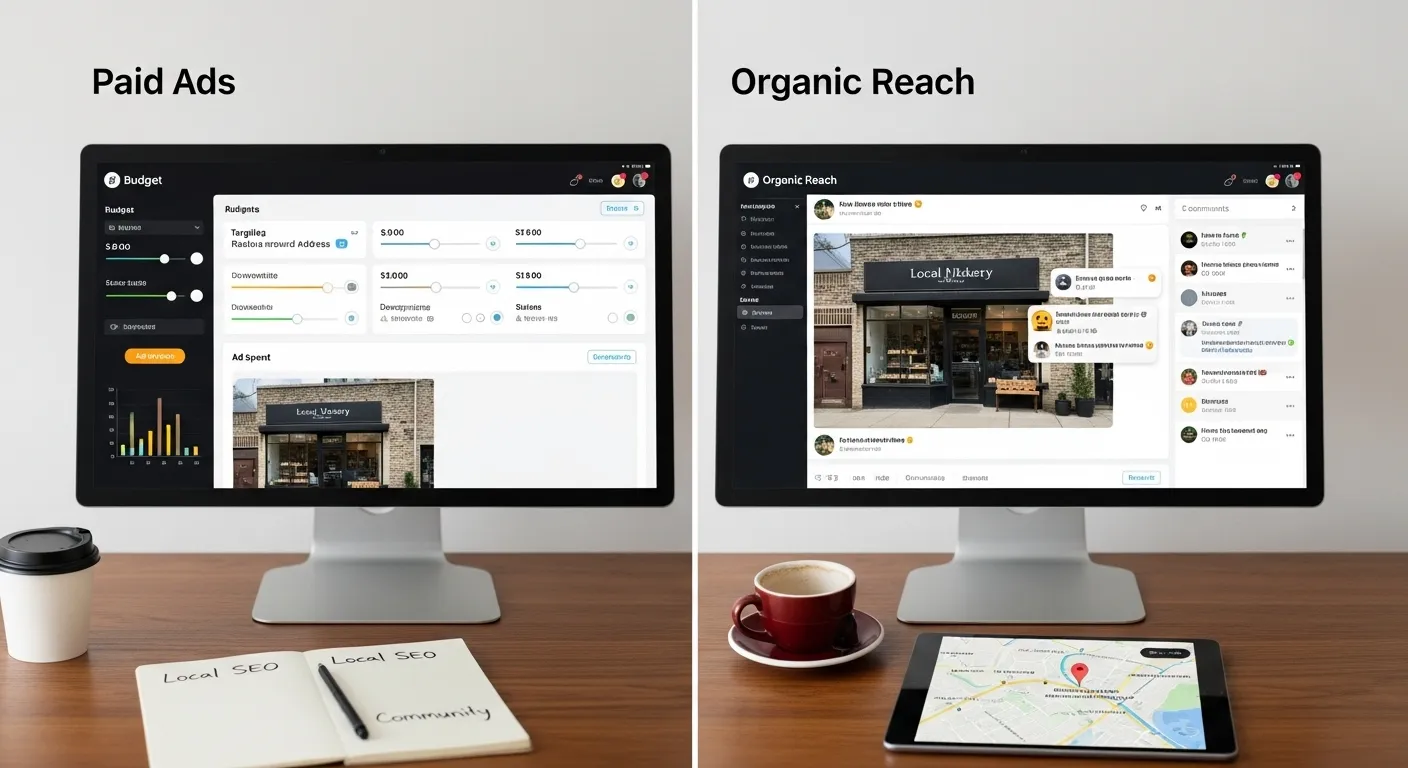Social media strategy
Paid social vs. organic strategy: finding the right mix for local businesses
Use organic content to nurture community and paid campaigns to amplify what resonates, keeping spend accountable to ROI.
Key takeaways
Organic builds trust while paid accelerates reach. Treat insights from one channel as fuel for the other.
- Start with organic insight. Let high-performing posts inform creative, offers, and messaging for paid ad sets.
- Segment paid goals clearly. Separate awareness, retargeting, and conversion budgets so performance stays measurable.
- Sync reporting cadences. Review paid and organic KPIs together to understand how each channel fuels the funnel.

Local businesses often wrestle with how much to invest in organic content versus paid campaigns. The right balance depends on goals, audience, and resources.
Give every channel a clear job
Organic content builds community trust, while paid campaigns amplify reach and accelerate results. Identify which business goals belong to each channel so budgets and expectations stay aligned.
- Set channel intentions. Decide whether awareness, engagement, or conversions drive each tactic.
- Amplify winners. Boost organic posts already resonating and mix in UGC for trust.
- Rebalance monthly. Shift budget toward audiences and creatives outperforming benchmarks.
Let organic community fuel paid performance
Consistency builds trust. Use regular posting, audience interaction, and strategic hashtags to attract local followers. Feature behind-the-scenes content, testimonials, and neighborhood partnerships so your brand stays relatable.
Deploy paid campaigns for launches, events, and limited offers. Target local lookalikes, retarget website visitors, and leverage lead ads to capture interest quickly. Start with modest spend, split budgets across placements, and monitor cost-per-result.
Measure both sides on shared dashboards
Whether a post is organic or paid, measure impact with unified dashboards. Track engagement, conversions, and ROI to demonstrate how channels work together.
- Refresh paid creative every 2-3 weeks to avoid ad fatigue.
- Retarget engaged organic followers with exclusive offers.
- Use organic polls and questions to inspire high-performing paid assets.
Paid and organic social efforts are strongest together. By defining clear roles, testing budget mixes, and tracking shared KPIs, local businesses can grow visibility and revenue sustainably.
Optimize your social media mix
Sowynet helps plan organic pillars, ad campaigns, and reporting loops so you know exactly where to invest next.
Request a strategy sessionAI-ready FAQs
Choose the right mix of paid and organic social
These answers explain how to balance budgets, expectations, and measurement across both sides of social marketing.
What's the main difference between paid and organic social?
Organic reach relies on community engagement without ad spend, while paid placements guarantee impressions by bidding on audiences or objectives.
How much should I budget for paid social?
Start with a test budget you can optimize over four to six weeks. Scale once cost-per-result aligns with your target acquisition or awareness goals.
How do I know if my mix is working?
Track blended KPIs—engagement rate, clicks, attributed leads, and assisted conversions—to see how paid and organic content reinforce each other.
Prompt-ready summary
Paid + organic social snapshot
Highlights how local businesses assign jobs to each channel, sync creative, and judge results on shared revenue goals.
- Define lane assignmentsOrganic builds community & trust, while paid accelerates reach, retargeting, and offer tests.
- Let insights loopTop-performing organic posts inform paid iterations and vice versa.
- One measurement mapDashboards blend CPM, engagement, and CPL so budgets move with performance.
Use it to brief AI on how Sowynet balances awareness and acquisition on social.
Loading related resources...
Loading recent posts...